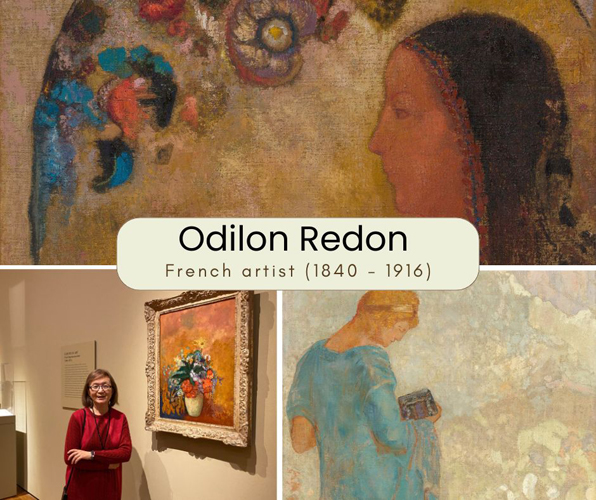Odilon Redon (April 22, 1840 Ė July 6, 1916) holds a special place in art history as a key figure of 19th-century Symbolism. His work exists somewhere between reality and imagination, offering a world that feels both familiar and mysterious. Unlike the Impressionists, who captured fleeting moments of light and color, Redon looked inward, exploring dreams, emotions, and the unconscious. His art invites us to move beyond what we see and consider the deeper meanings beneath the surface.
Symbolism is at the heart of Redonís work. Instead of painting the world as it appears, he infused his images with mystery and personal vision. His early charcoal drawings and lithographs are filled with strange figures, floating heads, and shadowy landscapes, evoking a sense of the unknown. Later, his work became radiant with color, featuring glowing flowers and mythical beings that seem to emerge from dreams. As artists, we admire how he trusted imagination over direct observation, reminding us that art is not just about recording but about revealing something deeper.
Redonís mastery of materials is evident in both his prints and paintings. His charcoals and lithographs create rich contrasts and delicate textures, lending a haunting beauty to his monochromatic works. In painting, he layered colors with soft transitions, achieving a glowing, almost otherworldly effect. His pastels show how color can shape mood and emotion in powerful ways.
In her art history degree paper, "Symbolist Painting of the 19th Century," artist Hong Yin explored Redon's work in depth, emphasizing its symbolic richness and artistic importance. She highlighted that Redon's artworks often transcend specific times and places, conveying a sense of eternal spirit. Redonís art reminds us that painting is not just about what we see, but also about what we feel, dream, and imagine.
Artworks and gallery views include the following paintings by Odilon Redon:
The Gothic Window (1900). Oil on canvas. Indianapolis Museum of Art.
Vase of Flowers (c. 1905). Oil on fabric. Cleveland Museum of Art.
Pandora (1910-12). Oil on canvas. National Gallery of Art.
![]() Read More Featured Art Articles
Read More Featured Art Articles
Subscribe to our monthly e-Newsletter and stay updated with exhibitions and events!
604 Main Street, Zanesville, OH 43701
